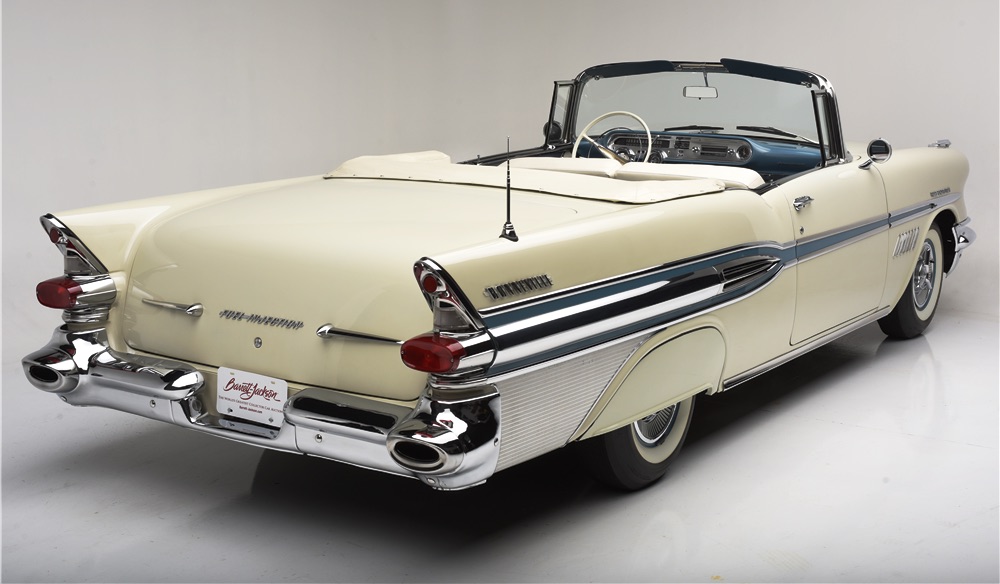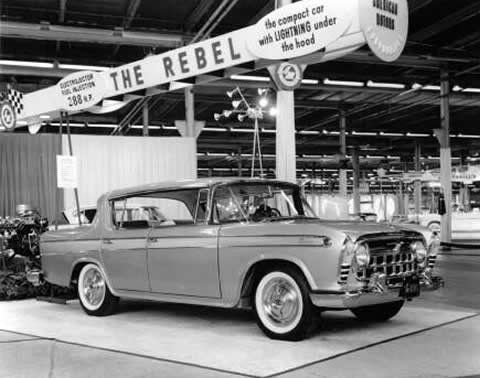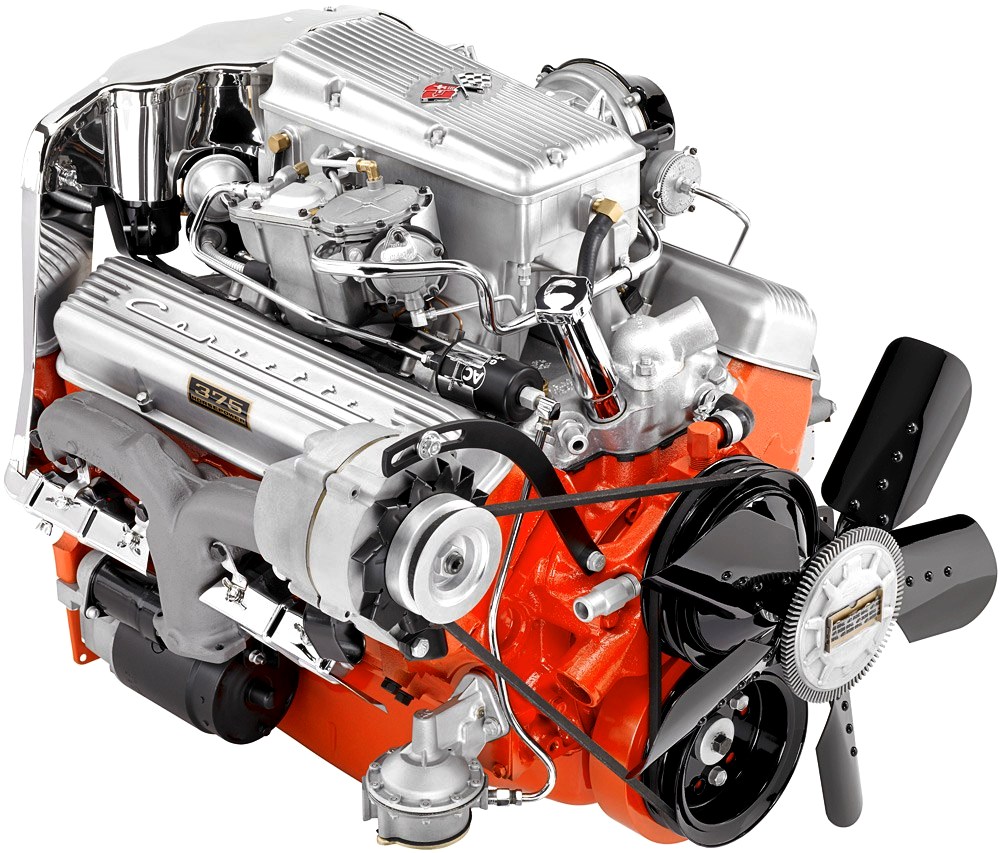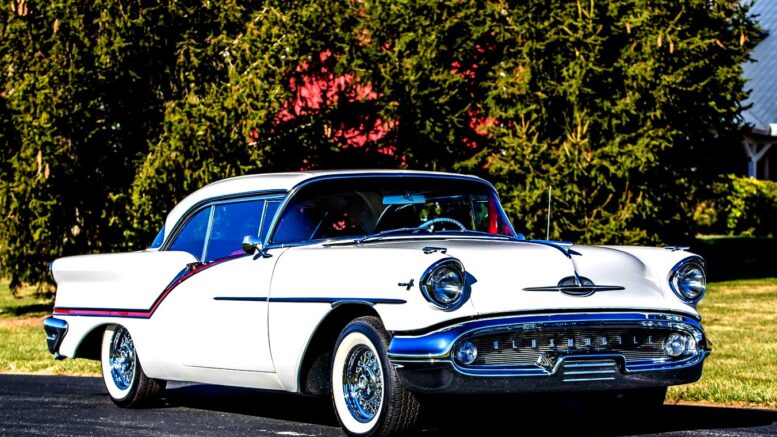Q: Greg, how about a discussion on fuel injected and tri-power (three two-barrel carburetors) induction on Chevrolet, Pontiac and Oldsmobile starting in 1957? I also know that Rambler had a fuel injected ’57 Rebel, but not sure they sold any. Thanks and I read your column every week. Joe K., Elysburg, Pa.
A: Joe I’m happy to engage! As mentioned in a previous column, Chevrolet became the first manufacturer in 1957 to release a Rochester fuel-injection unit as an option on its full size passenger cars and the two-seater Corvette. This injection unit produced one horsepower per cubic inch with its 283 cu. in. V8, that delivered 283 horsepower.
This 283/283 Chevy fuel injection is common knowledge to most serious car enthusiasts, but less know that in 1957 and 1958, Pontiac released its own variation of the Rochester fuel injection unit that lasted just two years through 1958. Pontiac relied on its 347-V8, and the fuel injected option was only available on the Bonneville Convertible, where it made 315 horsepower.

The very first car to offer both a fuel-injected engine and a Tri Power, 3×2 carburetor option in the same year is the 1957 Pontiac, when it offered both setups on its 347 cu. inch V8. It beat Chevrolet by one year as both fuel injection and Tri-Power was available in 1958 full-size Chevrolets. (Compliments Barrett-Jackson)
This same 347 V8 also showcased Pontiac’s first ever Tri-Power 3×2 carburetor setup, a full year before Chevy introduced its 3×2 on the 1958 348 W-head engine with a top rating of 280-horses. The first GM brand to introduce a Tri-Power, however, was not Pontiac as Oldsmobile was first in 1957 with its 300-horsepower J2 option on the 371-inch V8 that appeared in January of 1957. Pontiac’s Tri Power came out a few weeks after Olds, so between Chevrolet, Pontiac and Olds, there was a lot going on in high-performance as all three offered special performance engines.
Some good trivia? Just one model offered both Fuel Injection and Tri-Power options in 1957, namely Pontiac.
Chevrolet, meanwhile, utilized its fuel injection units all the way through the 1965 model year with the Corvette after eliminating the fuel injection option from its small block powered full size cars at the end of the 1958 model year. The big-block 348 never offered fuel injection, although it would grow into one of the most iconic muscle car engines ever when it became the famous 409. The Tri-Power was never available on the 409, which relied on single or dual four barrels.

Rambler also experimented with fuel injection in 1957 as its Rambler Rebel with a 327 V8 produced 288-horsepower with a Bendix fuel injection design. Rambler’s “no hot rod” car dogma and some issues with the Bendix unit doomed it from ever seeing mass production. (Compliments former AMC)
The Rochester fuel injection final GM production numbers, according to www.chevroletfuelinjection.com, came in at 13,289 combined units sold and utilized in the Chevrolet 1957 to 1959 passenger cars and 1957 to 1965 Corvettes. Over at Pontiac, 447 Rochester fuel injection units were bolted into the 1957 Bonneville ragtop, while in 1958 another 511 Pontiacs were built with the fuel injection available in all models.
However, as reader Joe noted, there was another manufacturer that toyed with fuel injection over at AMC with its new Rambler Rebel. To explain, consumers who purchased a four-barrel carburetor equipped ’57 Rebel didn’t realize that they were driving one of the hottest cars on the highway. The Rebel came with AMC’s 327-inch, 255 horse, four barrel V8, but an option was being readied thanks to a Bendix designed fuel injection unit, producing 288-horsepower. This intermediate size Rambler was much lighter than the full-size Chevy, Oldsmobile and Pontiac models mentioned above resulting in an added acceleration advantage. The Rebel had a family sedan motif and a short wheelbase of 108-inches.
Motor Trend Magazine tested the 255-horse ’57 Rebel and realized it was second only to the Corvette in acceleration tests. With the 288-horse Bendix option under the hood, it would have easily outperformed even the lightweight 1957 Corvette. So, in a move to protect its “family sedan” image, AMC quickly announced that the fuel injection option would not be available and all Rebels would utilize the 255-horse four-barrel carburetor instead.

Both Chevrolet and Pontiac offered Rochester fuel injection options in 1957. The longest lasting model with fuel injection was the Chevrolet Corvette that utilized Rochester Fuel Injection from 1957 to 1965. Shown is the 1965 327 Corvette fuel injected engine that put out 375 horsepower. (Compliments GM)
The 288-horse version utilized a Bendix electronic fuel injection unit called the Electrojector. Back at Rambler headquarters, executives in control didn’t want to endure any consumer concerns about AMC having the fastest car on the highway, much to the chagrin of younger executives who could see what was coming in the performance car boom. There were also some reliability issues with the electronic control unit that also contributed to the non-production decision. Heck, even the 1958 hit song “Beep Beep” by the Playmates might have had the Rambler outrunning a Corvette instead of that Cadillac.
Still, the Rebel with a carburetor was very fast. Only 1,500 ’57 Rebels were produced and I remember in 1958 and 1959, several fast-modified stock cars at our local speedway in Vineland, N.J., ran well with the 327 Rebel engines.
That’s it for this week, Joe, as I’m out of space. Thanks for your communication and I agree 1957 was certainly a year of great engine development in the early muscle car days.
(Greg Zyla is a syndicated auto columnist who welcomes reader questions on collector cars and auto nostalgia at greg@gregzyla.com or at 303 Roosevelt St., Sayre, Pa. 18840.)



Be the first to comment on "Collector Car Corner – 1957: The Year of Fuel Injection, Tri-Power 3×2 induction and a very fast Rambler Rebel"